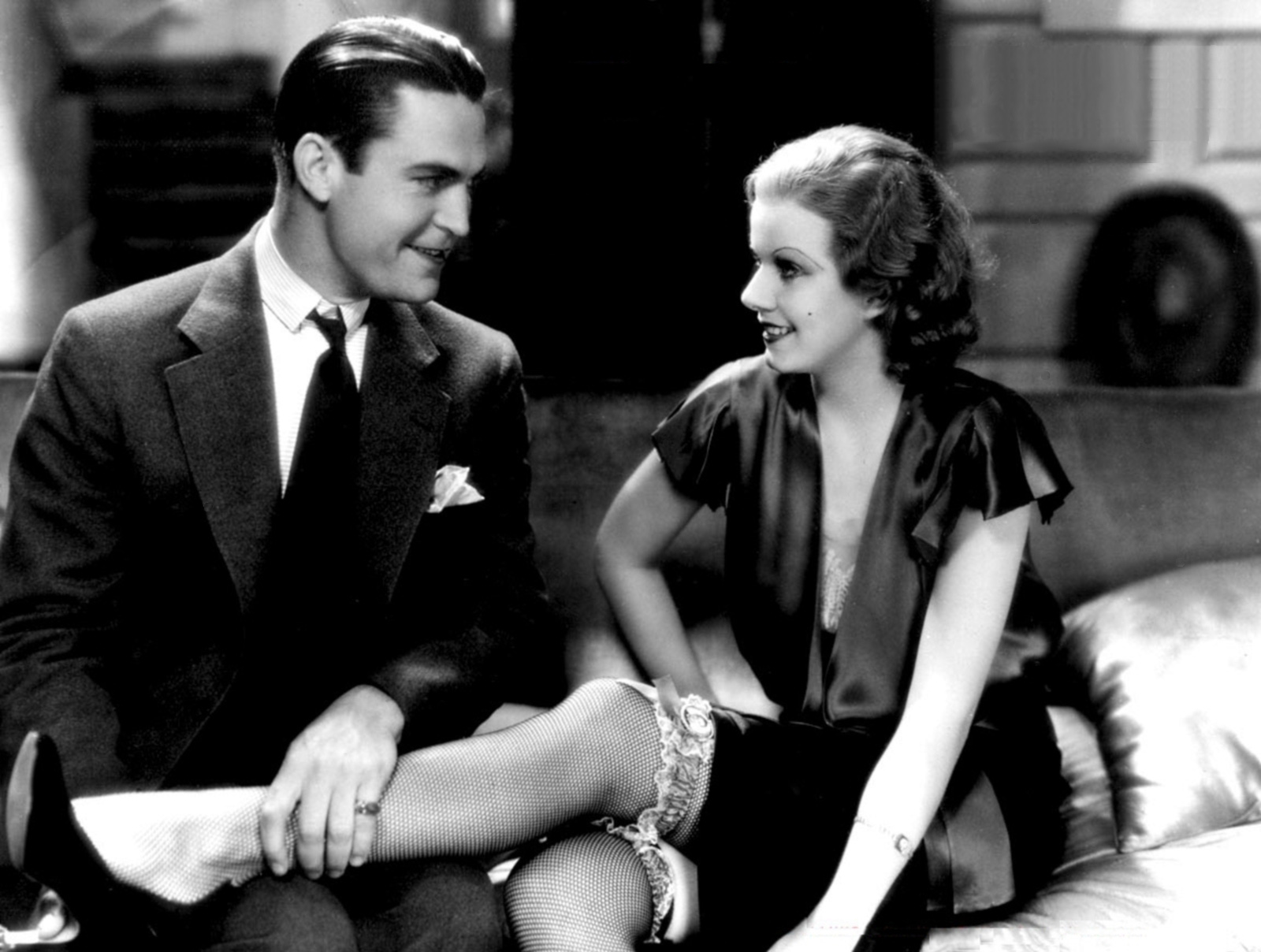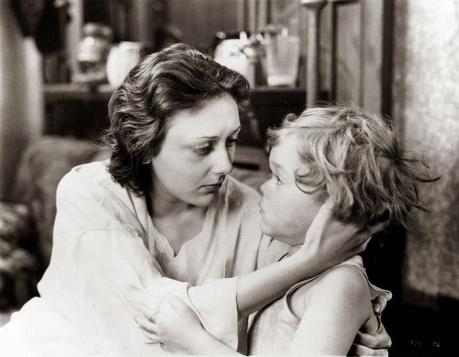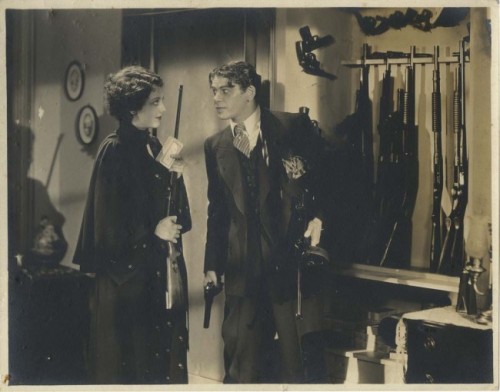Classic
cinema is often dismissed because of its lack of special effects, black and
white filming, and conservative subject matter. Prior to the advent of the 1934
Hay’s Code, however, cinema was anything but safe as films were free to explore
such adult issues as sex, drugs, and violence without consequences. During this
time, Depression era audiences could find an escape from their own troubles without
resorting to glossed over fantasies, as a plethora of racy stories and risqué performances
found their way to the silver screen. This week I’ll be featuring three of the
most notorious pre-code films that remain shocking even by modern standards.
THREE
ON A MATCH: Sex, drugs, suicide, and child neglect? 1932’s Three On a Match blends these strange elements and more to create a
truly sin-tillating story of the lives of three very different childhood
friends. Tough gal Mary (Joan Blondell) struggles to make a living as a chorus
girl after spending time in reform school, while straight-laced Ruth (Bette
Davis) tries to work her way to corporate success as a secretary, and vampish
Vivian (Ann Dvorak) marries into wealth. Despite her financial security and
seemingly ideal home life with her husband and young son, Vivian remains
restless and unsatisfied with her life. She embarks upon an affair with
exciting gambler, Michael (Lyle Talbot), and abandons her marriage in favor of
life in the fast lane. Unfortunately for Vivian’s husband, Robert (Warren
William), she was not prepared to abandon their son (Dickie Moore) and the
little boy is hidden at her new apartment where he is exposed to gangsters,
belligerent drunks, and his mother’s promiscuity. By the time that Mary discovers Vivian’s whereabouts,
Vivian has already entered a downward spiral of addiction as she is strongly
implied to be using both cocaine (her constant rubbing under her nose) and
heroin (Michael gestures to her in front of his friends and mimics injecting
his left arm), leaving her son to fend for himself as he wanders about the
apartment in filthy clothes consuming discarded, half-eaten bits of party
snacks to avoid starvation. Perhaps the most shocking aspect of Vivian’s
descent is the nonchalant way in which the other characters regard her
behavior. Although Mary disapproves of Vivian’s lifestyle, she fails to turn
her in to the police for kidnapping or child neglect, which would seem to be
the most logical course of action, and leaves Vivian with a mild reprimand
before turning her attention to beginning a romance with Vivian’s lonely
husband. Mary eventually tells Robert the whereabouts of his son and
immediately proceeds to take Vivian’s place as Robert’s live-in girlfriend
and Robert Junior’s almost equally neglectful step-mother. Similarly, Ruth
seems largely oblivious of anyone else’s actions and gladly takes on a job as
governess to Vivian’s son after Mary moves in, only to leave him wandering at
the edge of the pond in Central Park while she catches up on her reading. The
boy is then kidnapped at the park by a group of gangsters (led by a young
Humphrey Bogart) to whom Michael owes money and held for ransom at Vivian’s
apartment. The film reaches its climax when Vivian is aroused from her
drug-induced haze just long enough to overhear the gangsters plotting to kill
her son to prevent them from being tied to the kidnapping and commit an
elaborate public suicide in an act of desperate devotion (the suicide
alerts the police to investigate the apartment window she threw herself from)
that the film leads viewers to believe is her only chance at redemption. This
saucy melodrama is far more than the innocent bit of school-day nostalgia it was packaged as and
proves that ‘women’s pictures’ had a little something for everyone.
SCARFACE:
While it may not feature any mention of a certain ‘little friend’ the original
gangland classic contains a virtual gallery of shocking moments involving
machine guns, mobster’s molls, and sibling affections that are anything but
brotherly. Like its 80’s successor, the story begins with a classic tale of the
American Dream that within just a few frames goes brutally wrong. Recent
Italian émigré Tony Camonte (Paul Muni) begins his career as an enforcer for a
local mob in Chicago and quickly shoots his way through the ranks. With a
clever montage of ‘x’ marks displayed across the screen to mark the departure
of Tony’s victims, the film soon contains enough corpses to fill a morgue as he
conquers opposition on both sides of the law. Along the way, he diverts his
spare time between relentlessly pursuing his boss’s moll, the slinky Poppy
(Karen Morely), and guarding the long gone virtue of his brazen sister,
Francesca (Ann Dvorak). What is particularly striking about this film is the
fact that despite his place at the film’s center, Tony is hardly the most
callous or brutal character. His best friend, Guino, displays equal
ruthlessness as he abandons any semblance of loyalty to their boss and carries
out Tony’s orders without question. Similarly, Poppy presents herself as a
classy, independent, woman only to later reveal that she is the sort of person
who can be bought and sold for the right price. Although the film contains the
requisite machine gun happy action of its genre, it is the bizarre relationship
between Tony and his sister that is its most shocking element. While it is
little surprise that Francesca is as ruthless and amoral as her brother, the
way that these shared qualities attract his attention is nothing short of disturbing. Each time that
Tony sees Francesca so much as talking to another man he flies into an
uncontrollable rage befitting a jealous lover, and when he finds her alone with Guino at Guino’s
apartment, he immediately starts shooting. It is only after Guino is dead that
Francesca confesses that she and Guino were married but kept their relationship
a secret to avoid Tony’s wrath. After she informs on him to police in
retaliation, Francesca finds her brother hiding in an abandoned building, but is
unable to follow her plan to kill him and instead proceeds to help her husband’s
killer in his final shootout with police. For all its excesses, Muni’s
performance as Tony is just over the top enough to fit in within the chaotic
society on the brink that he is determined to succeed in.
 |
| That's one way to take dictation |
RED-HEADED
WOMAN: Jean Harlow made a successful career out of playing wanton women, but
even she had rarely enjoyed a part as seductively scandalous as that of Lillian
‘Lil’ Andrews. In 1932’s Red Headed Woman,
Harlow plays Lil as nothing less than a weapon of mass destruction ready to
detonate. At the film’s start, Lillian proudly alerts her friend to her plan to
seduce her way to the top of the society and by the next scene has already set
her plan in motion. She starts by seducing her boss, Bill (Chester Morris), and
convincing him to leave his devoted wife (Leila Hyams), only to find that her
relationship has brought her material success but left her a social outcast.
Ever ambitious, Lil refuses to settle for less than the best and proceeds to
seduce one of Bill’s top clients,
Charles (Henry Stephenson), and blackmail him into hosting a soiree in her
honor, as she knows that even the most morally rigid members of their social set
would not dare to turn down his invitation. Much to her dismay, however, the
guests arrive only to leave early for a party at Bill’s ex-wife’s house across
the street (the location for their new home was Lil’s vindictive idea). She
then lashes out at Bill, blaming him for her ostracism and rightly guessing
that he would rather be at Irene’s as well, and runs away to start over in New
York City. Meanwhile, Bill discovers heraffair with Charles and hires a
private investigator to track her in New York. The investigator proves to be
worth every penny as he discovers that Lil is not only continuing her affair
with Charles but has also begun to carry on a second liaison with Charles’
chauffer, Albert (a pre-stardom Charles Boyer). Bill alerts Charles to Lil’s
antics and both men quickly cut their ties with the scheming seductress.
Fortunately for viewers, however, the story doesn’t end there as Lil returns to
Bill only to find that he has reunited with his wife. Enraged at her plan’s
failure, she shoots Bill in retaliation, but fails to kill him. Rather than
prevent Lil from wreaking any more havoc by notifying the police, Bill decides
to pretend the shooting never happened in exchange for her quietly divorcing
him. Surprisingly, Lil actually takes Bill up on his offer and is last seen on
the arm of an elderly Frenchman…whose chauffer is none other than Albert. Not
only do Bill, his wife, and Charles refuse to punish Lil for her misdeeds, the
film’s screenwriters seem equally smitten with their anti-heroine as she is
left free to scam another day at the film’s finish. Pre-code audiences were
given the chance to laugh along with Harlow as Lil is given free rein to cheerily go about her sociopathic business
with her punishments restricted to a single slap in the face that, in one of
the film’s kinkier moments she happily admits she would like more of.
Manipulation, moral decay, and plenty of leg are all in a day’s fun in this Depression
era rom-com that is anything but romantic.



Oh The Production Code...it's fun to look back on you and laugh!
ReplyDelete